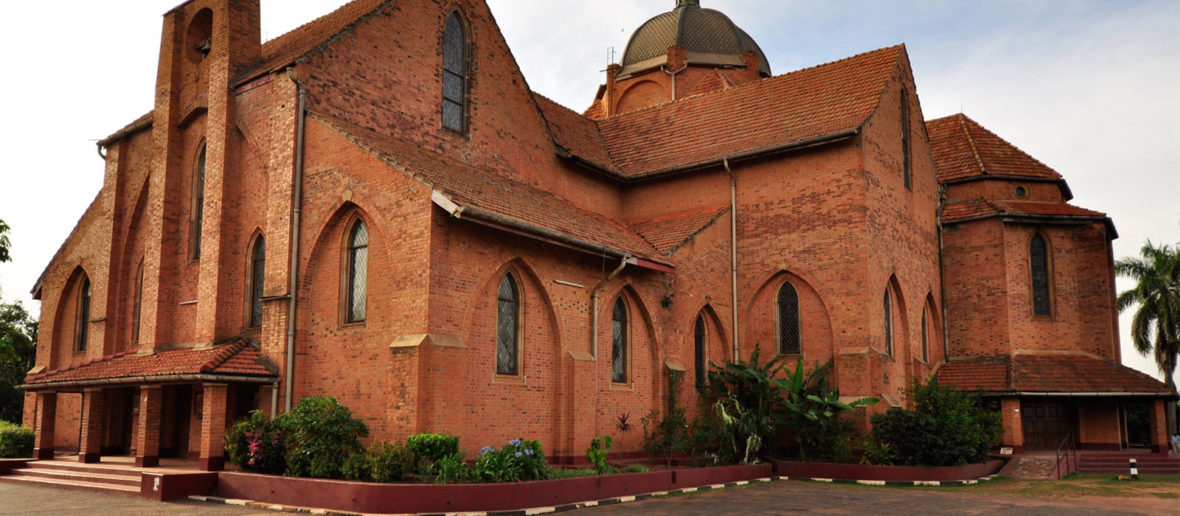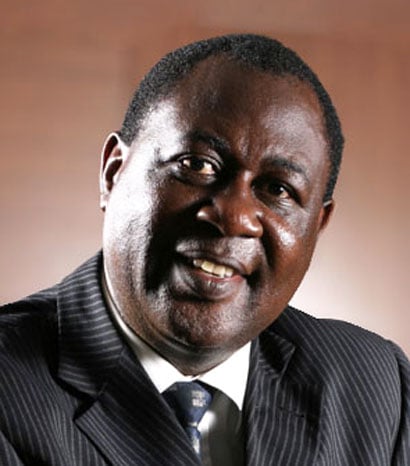
Why Rt Rev Kazimba will be consecrated at Namirembe and not Nakasero
Baca Juga


SAM MAYANJA
The Rt. Rev. Dr. Stephen Samuel Kazimba Mugalu shall not be consecrated Archbishop of the Anglican Province of the Church of Uganda at the Archdiocesan All Saint Church Nakasero but at St. Paul’s Cathedral Namirembe of Namirembe Diocese.
A historical narrative reveals why this choice is imperative, inescapable and most likely divine.
It was on Namirembe Hill that the Anglican community first established its formal place of worship which was opened for service on 31st July 1892.
This place of worship which was the headquarters of the Protestant Community which at that time spread over the present Uganda, Rwanda, Burundi, Eastern DR Congo (Boga Zaire) and South Sudan (Equatoria).
The structure whose architect was the protestant chief of Budu by the name of Nicodemo Sebwato was constructed using 500 Nzingu trees, huge amounts of reed-like muli or elephant grass, special grass known as ssubi with the traditional ganda artictitual modified from the one seen at the Kasubi tombs but with rectangular formation had capacity of slightly over 2500 worshipers.
It was an awesome structure hitherto unseen in the entire lake region kingdoms and surrounding areas. Bishop Tucker was awed at the structure and in his own words “the new church, or – as I think I must call it – the Cathedral,….. is certainly worthy of the name. For central Africa it is as wonderful a building as Durham Cathedral is for England.”
This was the beginning of the importance of the uniqueness of Namirembe and in 1897 when Uganda became an independent Diocese and Namirembe the seat of its Bishop, it was always referred to as “the Cathedral”.
The 1892 Cathedral lasted for only two years, until October 1894 when the entire building suddenly collapsed. Unknown to the worshipers the poles had been rotting under the ground.
The building was destroyed but the faith of the believers was not affected and on 21st November 1894 the Protestant chiefs under the chairmanship of their Political Leader the Katikiro Apollo Kaggwa resolved to rebuild the cathedral.
Apollo Kaggwa th was appointed artichect and he instructed this time the supporting poles should be made from three types of wood namely; palm trees nkoma, the “Nzingu”, and “Lusambia”.
The special quality of these type of trees was that The latter heavy to carry less subject to rot and insect attack. This second Hilltop Cathedral was formerly opened on 14th July 1895.
It could accommodate about 4,000 worshippers and was considered one of the three most remarkable churches in sub-Saharan Africa.
The others being the Scotch Mission at Blantyre and the Cathedral in Zanzibar.
The second Cathedral began to show signs of collapse around the year 1900.
Termites were gaining hold of the structure and it was feared that, if nothing was done, the building would collapse.
Apollo Kaggwa the political leader of the Protestants took this as a personal challenge and mobilised the Protestant chiefs and Missionaries to draw plans to put in place a more permanent Cathedral.
A design which was based on that of the temple church in London was adopted. Resources were mobilised and the building was finally finished in mid 1904 having taken a good three years to construct.
On 23rd September 1904, thousands witnessed Bishop Tucker 1904 consecrate the glorious church.
The Cathedral had been in existence for only six years when it was struck by lightning.

Within ten minutes the whole roof was ablaze, and soon fell in.
The work of several years came to nothing in a few minutes. Now for the third time in less than twenty years the protestant community had to think again about their Cathedral.
The faith of these early Christians remained strong and within two months of the fire they had asked Bishop Tucker to look for a suitable architect in England who would send them a design and by end of 1910 the job was given to Professor Beresford Pite of the Royal College of Art in England.
By April 1911 Pite’s architectural drawings had arrived at Namirembe.Pite’s estimated cost frot buildings erection was 20,000 pound sterling.
Raising this money was a daunting task.
It even became more challenging when it was revealed that 5 times more was required than originally budgeted.
The period was difficult because of the First World War which was ragging.
Continued hostilities in Europe made it import some materials unique for the building under construction.
It was difficult t o find timbers, of the required quality.
Some building boards were only found in Kenya and were obtained at great cost. Other materials were only procured after great difficult.
Financial resources ground to a trickle and Apollo Kaggwa appealed to all Protestant chiefs to contribute 30% of their monthly income to the construction.
It was now realised that a fundamental mistake had been made when the Baganda Protestant had started the building without consulting the surrounding countries.
The had regarded the whole cathedral project as a Baganda effort.
A church meeting was held in early 1917 and the Baganda Protestant’s apologised to their christian brethren from other parts of Uganda and their region and by a unanimous show of hands the brethren accepted the apology and declared themselves “willing to cooperation to the utmost in the final stages”.
Eventually, contribution also came from other parts of Uganda and the region and work which had stalled around 1914 rebound and in the mid 1915 the site was described as an imposing array of wall and scaffolding.
By April 1919, the scaffolding had been removed and plans were on hand for the consecration ceremony to take place later in the year.
Finally, after nineteen years of work, from 1910, when the third cathedral was struck by lightning to 13th September 1919 when the cathedral was finally consecrated, the faith of the protestant Anglican community had been put to test.
It was therefore fitting that the consecration was done amid great rejoicing. Inside the cathedral, the governor presented , the signed petition of Consecration, to the Chief Justice, and to Bishop Willis.
The Deed of donation was offered by Apollo Kaggwa.
It is estimated that 20,000 people surrounded the building in addition to rows inside who were estimated to have numbered around four thousand.
The building of Namirembe St. Paul Cathedral as it stands today being the fourth cathedral in construction was a massive undertaking.
It was by far the largest contribution made by Ugandans themselves.
The historical narrative of the four cathedrals demonstrates the courage and determination of the Ugandan people not to be overcome by calamity or discouraged by hardship.
A few years ago Bishop Luwalira of Namirembe Diocese decided that something needed to be done about the dilapidated state of the Cathedral.
He spearheaded a massive rehabilitation of the Cathedral. Ugandans from all walks of life and from all corners responded by contributing to the rehabilitation effort. The late Professor Apolo Nsibambi who was Namirembe Cathedral congregant, informed his friend and boss President Museveni about the rehabilitation work going on at Namirembe.
Museveni, not only responded with generous financial contribution but also found time to inspect the work in progress.
His personal attendance at the consecration of the now sparkling fully renovated St. Paul Cathedral Namirembe was a fitting statement as to the national character of the St. Paul’s Cathedral.
St. Paul’s Cathedral is therefore a national edifice giving testimony to what Ugandans can do for the national good.
It is symbol of the celebration of the tenacity and faith. Within this scheme of things therefore, on 1st March 2020 Dr. Stephen Samuel Kazimba Mugalu shall be consecrated Archbishop of the Anglican Church of Uganda with a structure which symbolise the nation, the faith and evidence of what men of good will can do across generations in time and space.
The narrative of St. Paul’s Cathedral Namirembe certainly provides Archbishop Stephen Samuel Kazimba Mugalu with the knowledge which he already has but must constantly be reminded that even in a desert God provides. Tukutendereza Yesu.
The author is a senior partner at Kampala Associated Advocates
The post Why Rt Rev Kazimba will be consecrated at Namirembe and not Nakasero appeared first on Nile Post.


0 Response to "Why Rt Rev Kazimba will be consecrated at Namirembe and not Nakasero"
Post a Comment